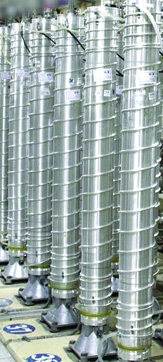November 27, 2020

Iran has violated the Joint Comprehensive Plan of Action (JCPOA) in yet another way, according to the International Atomic Energy Agency (IAEA).
The agency said November 11 that Iran has installed a first “cascade” of advanced centrifuges in the underground Natanz uranium enrichment plant, although the JCPOA says Iran can only use first-generation IR-1 centrifuges there.
The three European participants in the JCPOA—Britain, France and Germany—issued a statement November 20 castigating Iran for violating the agreement yet again. It said, “We have been consistently clear that we regret the US withdrawal from the JCPOA and re-imposition of US sanctions…. However, despite these good faith efforts, Iran has engaged for a year and a half now, in numerous, serious violations of its nuclear commitments. We continue to be extremely concerned by Iran’s actions, which are hollowing out the core non-proliferation benefits of the deal. Advancements on research and development have irreversible consequences.”
The last sentence was a repudiation of Iranian comments that, if the United States returned to its commitments, Iran could easily return to its commitments by bringing its stocks of enrichment uranium and other violations of the JCPOA easily back in line with the JCPOA numerical caps. But it cannot reverse what it has learned from conducting banned research.
Back in January, Iran informed the IAEA that it would transfer three “cascades” of the uranium-enriching machines from an above-ground pilot plant at Natanz to the underground chamber where it has long done its large-scale enrichment. Iran made that announcement after the above-ground building were the advanced centrifuges were assembled burned down in an apparent act of sabotage.
A “cascade” is a linked string of individual centrifuges, normally numbering about 164, although the latest cascade has 174 centrifuges.
Iran installed and connected one cascade of IR-2m centrifuges and, as of November 14, the IAEA said, began putting uranium hexafluoride gas (UF6), the feedstock for centrifuges, into the centrifuges.
The IAEA said Iran had begun installing a cascade of IR-4 centrifuges and had told the IAEA it would later install a cascade of IR-6 centrifuges.
It is not replacing any of the 5,060 centrifuges in the underground hall—the maximum allowed by the JCPOA—but adding the more advanced models to the total. The IAEA said that, if the new centrifuges work as planned, Iran will be able to produce about 50 percent more enriched uranium in any given time period.
The more advanced centrifuges can operate more efficiently and produce more enriched uranium than the IR-1 models. Theoretically, based on the design, the IR-2m is able to produce six times as much enriched uranium in a given time period as the IR-1. The IR-4 is theoretically five times faster and IR-6 theoretically 10 times faster.
The quarterly report also said Iran continues to increase its stockpile of low-enriched uranium far beyond the limits set in the nuclear deal and to enrich to a greater purity than permitted by the JCPOA.
Iran decided to violate the JCPOA in those ways a year after President Trump withdrew from the JCPOA and re-imposed sanctions on Iran.
The IAEA said that as of November 2 Iran had a stockpile of 2,442.9 kilograms (5385.7 pounds) of low-enriched uranium, more than 12 times the limit of 202.8 kilograms (447 pounds) allowed in the JCPOA. Its current stock, however, is only about one-fifth of its stock before it signed the JCPOA.
The IAEA reported that Iran had also been continuing to enrich uranium to a purity of up to 4.5 percent, higher than the 3.67 percent allowed under the deal.
And it also exceeded the JCPOA limit of 130 tons of “heavy water,” but it sold off much of that production so it only had 128 tons on hand when the IAEA made its quarterly measure and was thus back in compliance.
The IAEA also revealed that when it inspected a warehouse in the Turquzabad neighborhood of Tehran in February 2019, it found traces of nuclear material that Iran had never declared. The Turquzabad warehouse is the one that Israel clandestinely raided in 2018, stealing a huge quantity of records on Iran’s nuclear program before 2003. It is not one of the sites the IAEA learned of from those records and was allowed to inspect in the last few weeks.
The IAEA took “swipes” of the structures at those two sites, but has not yet determined if there was any nuclear residue at either of those sites.
As for Turquzabad, the IAEA said Tehran’s explanations for the presence of uranium residue were “unsatisfactory” and “not technically credible.”
The IAEA earlier found uranium residue at a building on the Parchin military reservation south of Tehran that Iran long insisted was never used in the nuclear program.
Turquzabad is now the second site Iran has denied was used in the nuclear program where uranium has now been found.
